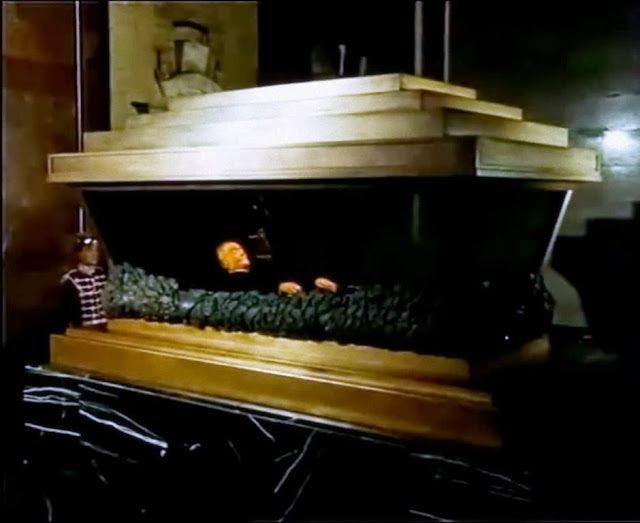Polina Spartyanova
When Georgi Dimitrov, aka "Hero of Leipzig" and "Leader and teacher of the Bulgarian people", died in 1949, the Council of Ministers of the Republic of Bulgaria decided that his body be embalmed in Moscow and placed in a mausoleum in the centre of Sofia for "eternal pilgrimage." Its construction began immediately after the death of the Leader and was completed in a record six days, by the time when his body was brought from the USSR to Sofia. There were only three such mausoleums in the eastern bloc and after Moscow and Beijing Sofia became the third socialist capital that could boast such a landmark. Its construction was aimed at reinforcing the idea of the communist regimes at the time, namely the personality cult. The communist leadership organized an impressive funeral ceremony for Dimitrov, thus ranking it among the greatest ones in the new history of Bulgaria.

Originally, the facade of the mausoleum was faced with stone from the city of Ruse, and later it was replaced with new stone slabs from the city of Vratsa. The tomb stood out against the garden in front of the National Theatre in Sofia and facing former palace of the prince that housed the office of the last Bulgarian king and of Georgi Dimitrov before his death. A sculptural bust of the Leader was built opposite the entrance of the mausoleum, surrounded by busts of other prominent Bulgarian communists such as Dimitar Blagoev, Georgi Kirkov and Vasil Kolarov. The latter was buried in the second niche, which was designated for the burial of future party leaders and was added to the main building a few months after the funeral of Dimitrov. In 1974-1975, a major reconstruction of the mausoleum was carried out and mosaics by Dechko Uzunov were added in the premises.

Like Lenin’s Mausoleum in Moscow the one in Bulgaria was equipped with a high-tech air conditioning system to maintain a low temperature in the room for pilgrimage. Below it, there was a laboratory where the sarcophagus was taken after visiting hours in order for the body in it to be processed and maintained.
The mausoleum of Georgi Dimitrov did not only raise the totalitarian cult of his personality but also served as a public ceremonial of the People's Republic of Bulgaria from 1949 to 1989. The protocol required that wreaths be laid there when foreign government delegations were on a visit to Bulgaria and during marches and parades on occasion of public holidays in the country, the party-state leadership greeted the people from the rostrum of the building. At the mausoleum of Georgi Dimitrov, there were militia guards of primary importance, involving a permanent guard of honour that changed observing a ritual similar to the one that takes place today in front of the building of the President.
In 1990, at the request of Georgi Dimitrov’s relatives, Andrey Lukanov’s government decided to remove the body from the mausoleum and to bury it. The same day the leader’s body was removed from the Mausoleum and after a large number of people paid their last respects to him, he was reburied in the Catholic part of the Central Sofia Cemetery. The body of Vasil Kolarov was exhumated and moved to the Central Sofia Cemetery at the same time too.
The centre of the communist cult remained closed for nine years and many debates about the future of the building took place during that time. The view that the mausoleum must be destroyed in order not to become a symbol of totalitarianism and pilgrimage place for communists prevailed in society. Its demolishing started on 21 August 1999 under the command of Deputy Prime Minister and Minister of Regional Development and Public Works at the time Evgeni Bakardjiev and lasted six days or as many days as it was built for.
